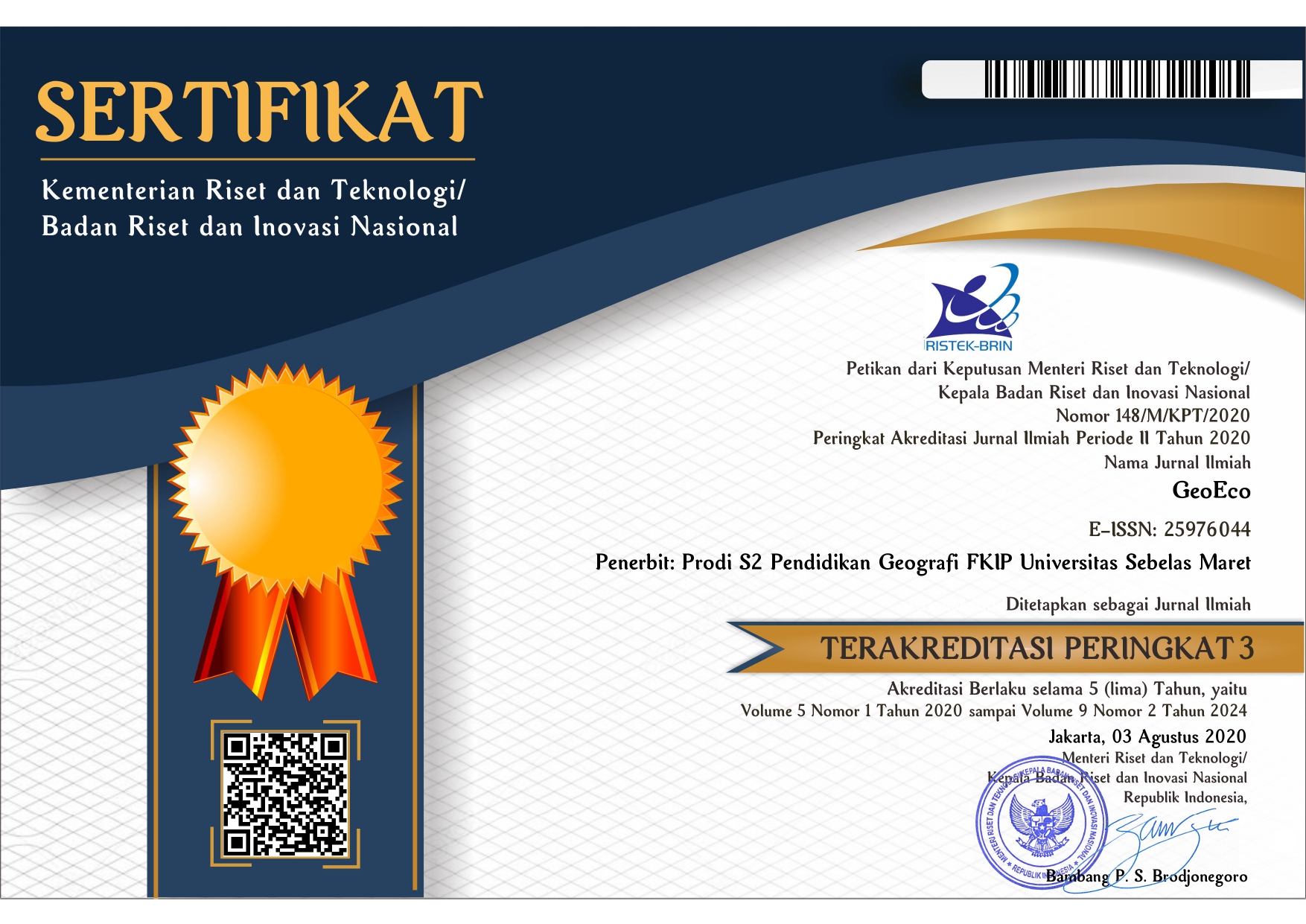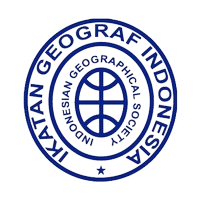CHARACTERISTICS OF SPATIAL CAPABILITY OF GEOGRAPHIC STUDENTS OF PGRI PALEMBANG UNIVERSITY
Abstract
Spatial ability is an important spatial intelligence possessed by geography education students. with this ability, students' thinking can develop while learning geography. The characters of spatial ability of students differ from one another. In this research the researcher will discuss the character of the spatial ability of geography education students, amounting to 27 students. The method used in this research is descriptive qualitative method. Characteristics of students' spatial ability are seen from the results of tests on basic cartography courses. The test was made with 12 essay questions with criterion questions from the cognitive domain according to Taxonomy Bloom. Of the six cognitive criteria, three criteria were taken, namely remember, understand, and apply. The results on the criteria remember all students can answer correctly, then on the criteria to understand the average value has decreased by 17, and the criteria to apply the average value to 13.
Keywords
Full Text:
PDFReferences
Anderson, L. W., & Krathwohl, D. R. (2001). A Taxonomy for Learning, teaching, and Assessing ; a revision of Bloom’s Taxonomy of Educational Objectives (Abridged). New York: Longman. Garavalia, L. S., Hummel, J. H., Wiley, L. P., Huitt, W. G., Garavalia, C., & Constructing, W. (2000). syllabus : Faculty and student perceptions of important syllabus components . Journal of Excellence in College Teaching , 10 ( 1 ), 5-22 . Available online at. (1994). Retrieved from http://edpsycinteractive.org/papers/cons-course-syll.pdf Juliane, C., Armant, A. A., Sastramihardja, H. S., & Supriana, I. (2018). Question-answer pair templates based on bloom’s revised taxonomy. IOP Conference Series: Materials Science and Engineering, 434(1), 1–9. https://doi.org/10.1088/1757-899X/434/1/012281 Krathwohl, D. R. (2002). A revision of Bloom’s taxonomy of educational objectives : An overview. Theory Into Practice, 41(4), 212. https://doi.org/10.1207/s15430421tip4104_2 Metoyer, S., & Bednarz, R. (2017). Spatial Thinking Assists Geographic Thinking: Evidence from a Study Exploring the Effects of Geospatial Technology. Journal of Geography, 116(1), 20–33. https://doi.org/10.1080/00221341.2016.1175495 Mohammad, S., & Soozandehfar, A. (2016). Criticism of Bloom’S Taxonomy. American Research Journal of English and Literature(, 2, 1–9. Retrieved from https://www.arjonline.org/papers/arjel/v2-i1/14.pdf National Research Council. (2006). Learning to think spatially: GIS as a support system in the K-12 curriculum. In Alternative and Complementary Therapies (Vol. 10). https://doi.org/10.1089/1076280041138243 Ramirez, T. V. (2017). On Pedagogy of Personality Assessment: Application of Bloom’s Taxonomy of Educational Objectives. Journal of Personality Assessment, 99(2), 146–152. https://doi.org/10.1080/00223891.2016.1167059 Sudjana, N. 2010. Penilaian Hasil Proses Belajar Mengajar. Bandung: PT Remaja Rosdakarya
Refbacks
- There are currently no refbacks.












.png)

